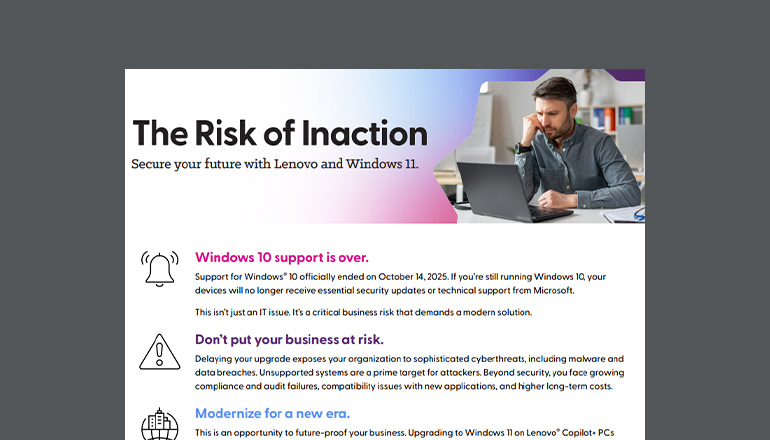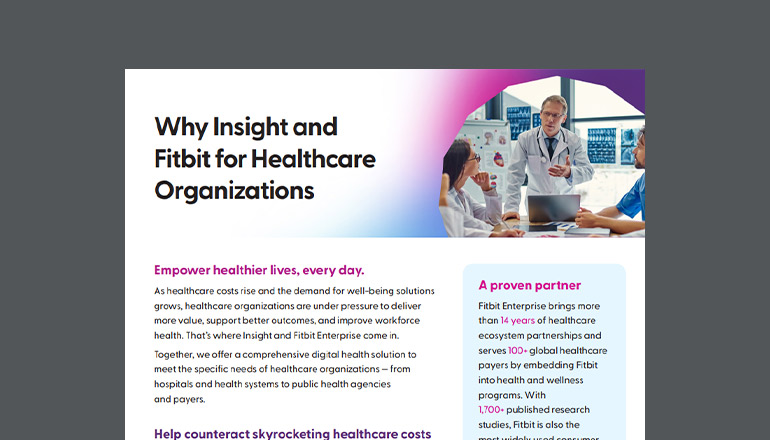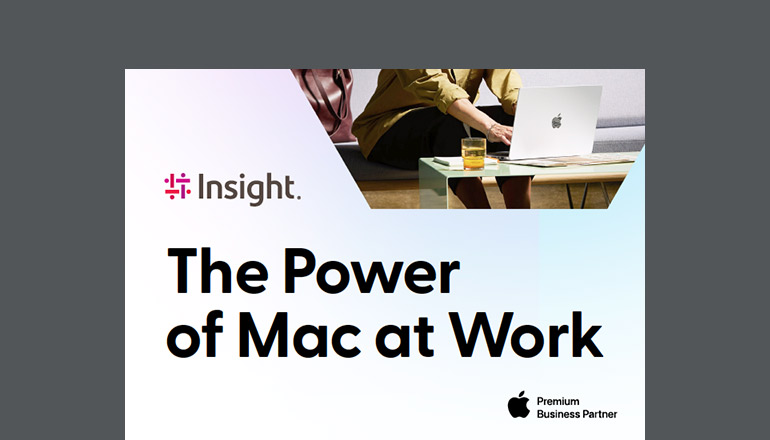Article Maximizing Business Outcomes in the Age of Mobility
Mobile devices have found a home in offices, throughout retail locations, on business jets and across factory floors. Effectively managing these devices is the next frontier.
By Insight Editor / 7 Feb 2018 17 Sep 2019 / Topics: Devices Mobility Modern workplace

The number of smartphone users worldwide surpasses 3 billion and is forecast to further grow by several hundred million in the next few years. It’s projected that there will be 1.28 billion tablet users by 2021. The Internet of Things (IoT) represents another category of mobile technology experts are anticipating to be a game-changer.
Executives are not blind to this reality.
A 2018 survey by Oxford Economics showed that 80% of senior IT and business leaders believe their employees can’t do their jobs effectively without a smartphone. Nearly as many respondents also reported that mobile devices are essential to business workflows and maximizing business outcomes.
The type of mobile device, specifically the vendor, matters. An iPhone user and an Android user are different, for example. Each has attachments to the interface and capabilities, which drives efficiency and engagement. The workplace is not immune to this and many executives understand. The 2019 Insight Intelligent Technology Index reveals 77% of IT decision-makers believe it‘s “very or extremely important” for corporate IT to resemble consumer experiences.
Thus, the majority of enterprises employ a hybrid approach for mobile devices; a strategy that leverages a combination of employer-issued tools and a Bring Your Own Device (BYOD) plan. This model is understandably lauded for its flexibility and its ability to increase employee satisfaction. Some companies claim they save on costs with BYOD programs, which may or may not be the case considering the costs of paying out stipends to compensate for personal mobile usage. However, a BYOD/hybrid mobile environment can also be difficult to manage. Ensuring security throughout a mixed-device fleet is anything but simple.
A study by Enterprise Mobility Exchange and NetMotion Software revealed that 49% of IT leaders could not give a specific figure of mobile security incidents that took place in the previous year. There were also considerations around access control, performance and liability that were not insubstantial.
Where does this leave us? What’s an effective mobile strategy? How do you manage mobility in today’s world? Are you truly maximizing your business outcomes?
The shift to mobile-first workforce to maximize business outcomes
“The runaway growth of mobile consumption by the modern workforce is forcing enterprise IT (and their service providers) to view reality through a mobile-first prism,” says Evan Tomlin, director of mobility and end-user compute at Insight. “This impacts all dimensions of a given worker’s perception of his or her career — and their effectiveness in furthering company goals.”
A report by The Economist expands on mobility’s impact on these dimensions. It found that workers who consider their employer a “pioneer” in mobile adoption and support have significantly higher levels of productivity (16%), creativity (18%), satisfaction (23%) and loyalty (21%) than those who say their employer’s use of mobile technology is subpar.
IT and business leaders are embracing a mobile-first mentality and maximizing business outcomes when they:
- Prioritize agility and productivity across the enterprise.
- Deploy devices that align with overarching business needs and goals.
- Use infrastructure that’s secure, manageable and cost-effective.
This can be difficult to achieve, but those who pursue it can expect notable results. Mark Cross, services product manager at Insight, says that coupling a mobile-first strategy with modern capabilities such as zero-touch enrollment can help businesses drive key business outcomes. These include:
- Increased productivity and lower costs due to faster, seamless deployments that don’t require heavy lifting by the IT organization
- Bolstered security from more consistent security policy implementation across all endpoints
- Improved access and controls through the use of persona segmentation and intelligent automation
- Optimized expenses through more strategic management of mobile endpoints and services
The future of endpoint management: Less is best.
As technology, the workplace and consumer habits converge, the tools and processes used to manage different devices — for example, Windows laptops versus Apple and Android tablets — are slowly unifying as well. According to Cross, the combination of endpoint devices and services can enable a superior out-of-the-box experience for end users.
“Modern management methodologies from all Original Equipment Manufacturers (OEMs) now enable a fully automated installation and configuration, over the network, for applications, security policy enforcement, and OS and applications updates without the help of traditional IT staff,” he says.
But as IT looks for more ways to transition from a cost center to a value-add for organizations, IT staff faces a whole new crop of questions to find answers to:
- Which management platform is best, based on my business environment?
- How do we monitor identity and access controls?
- What’s our best support option for end users?
- How should we continue to adapt our business model as the market changes (for example, the proliferation of IoT devices)?
The truth is, finding the proper means of deploying, securing and managing an increasingly diverse device landscape — throughout the entire lifecycle — can be overwhelming for IT teams. Two-thirds of enterprises have opted to outsource some or all of the day-to-day deployment and management of devices in order to stay on top of the complexities of mobile device management, according to the Oxford Economics study.
Maximizing business outcomes by choosing the right partner
If unified endpoint management is the future, what should organizations look for in a solution? Cross says Insight Managed Mobility is one of a kind; “a complete lifecycle solution for all smartphone and tablet needs that no other supplier can match.” It provides a consolidated offering through five pillars:
- Engage — This involves assessing the environment and mapping all new tools and processes as they align to business goals. This also includes outlining economies of scale, projecting year-over-year costs, advising on proper device types and more.
- Procure — Based on consultation, this consists of finalizing your mobile device choices, licenses, specialty OEM products and lifecycle services.
- Deploy — Adopt modern mobile infrastructure with shocking ease and simplicity. We coordinate and perform technical services related to device provisioning, configuration and architecture to expedite deployment at any scale.
- Perform — This includes adoption and advisory services, end user and admin service desk support for L1 through L3 issues, and shift-left offerings fueled by predictive insights and self-service models.
- Extend — We handle all needs related to repair, replacement and recycling to ensure business continuity, pervasive security and consistent productivity. Optional telecom expense management services can provide more exacting cost control.
While many solutions in the marketplace boast strengths in a few of these pillars, the true value-add for organizations will emerge from fully actualized, end-to-end solutions that deliver on all five and maximize business outcomes.







